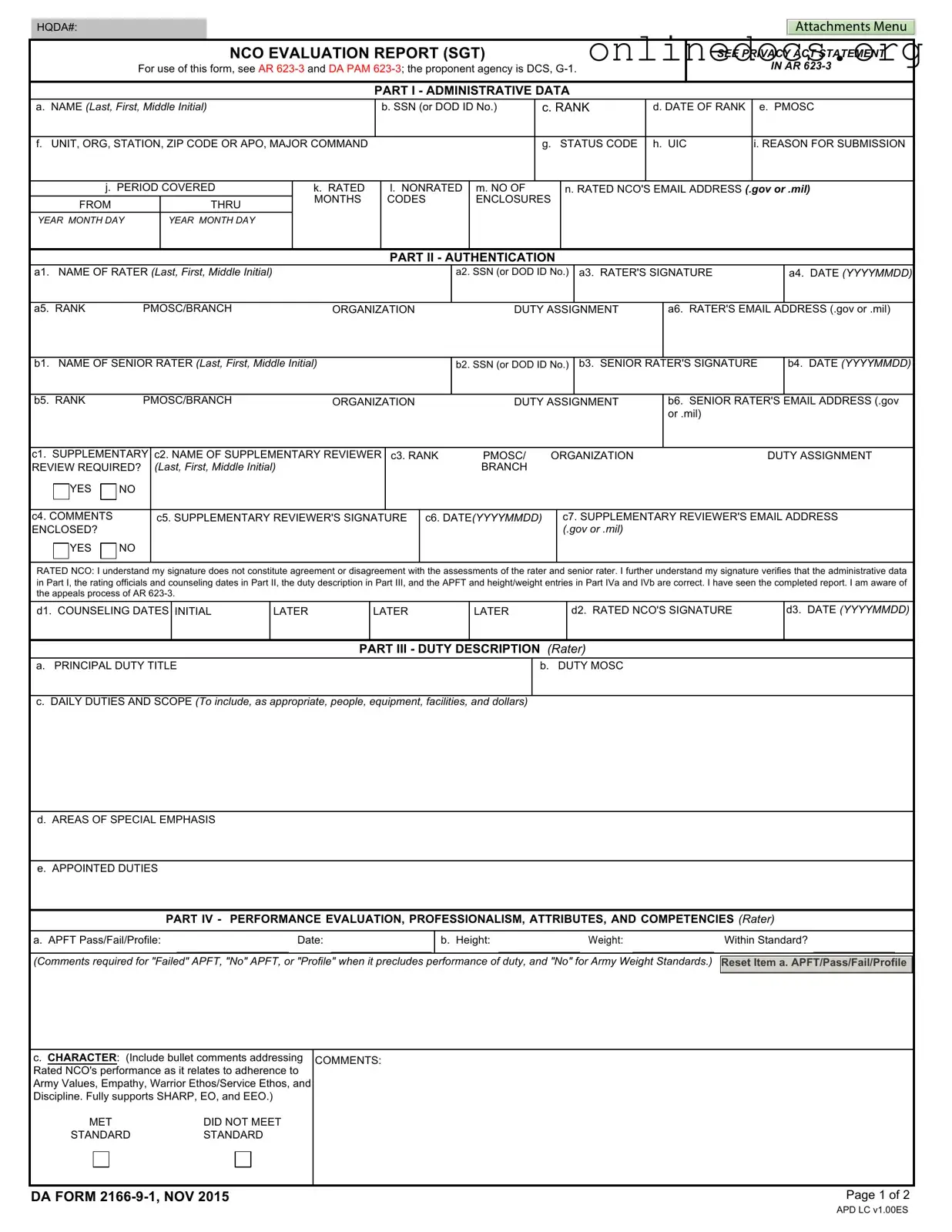The DA Form 2166-9-1 is similar to the DA Form 67-9, which is the Officer Evaluation Report (OER). Both forms serve to evaluate the performance of military personnel, but they are tailored for different ranks. The OER is used for officers, while the DA Form 2166-9-1 is specifically for non-commissioned officers (NCOs). Each form includes sections for administrative data, performance evaluations, and signatures from raters and senior raters. The purpose of both documents is to provide a structured assessment of an individual's performance and potential, ensuring that evaluations are consistent and standardized across the military.
Another similar document is the DA Form 1059, which is the Academic Evaluation Report (AER). This form is used to evaluate soldiers who complete formal training courses. Like the DA Form 2166-9-1, the AER includes sections for administrative data and evaluations of performance. Both forms aim to capture a soldier's competencies and skills, albeit in different contexts. While the DA Form 2166-9-1 focuses on overall job performance in a unit, the AER concentrates on academic achievements and training outcomes.
The New York Lease Agreement is an essential legal document that establishes and formalizes the terms between landlords and tenants, ensuring clarity and minimizing potential conflicts. By detailing specific rights and responsibilities, both parties have a legally binding reference to uphold throughout the rental period. For those looking to access a New York Lease Agreement form, a resourceful option is found at legalformspdf.com, where you can obtain the necessary documentation to facilitate a smooth leasing process.
The DA Form 4856, known as the Developmental Counseling Form, also shares similarities with the DA Form 2166-9-1. This form is used for documenting counseling sessions between leaders and soldiers. Both forms emphasize the importance of feedback and development in a soldier's career. While the DA Form 2166-9-1 provides a formal evaluation of performance over a specific period, the DA Form 4856 is more focused on ongoing communication and guidance. Each document plays a role in the professional growth of military personnel.
Lastly, the DA Form 7000, which is the Financial Liability Investigation of Property Loss (FLIPL), is another document that has some parallels. Although it deals with financial accountability rather than performance evaluation, both forms require detailed information and signatures from various parties. The DA Form 7000 assesses responsibility and liability, while the DA Form 2166-9-1 evaluates a soldier's performance and potential. Both documents are essential for maintaining standards and accountability within the military framework.
